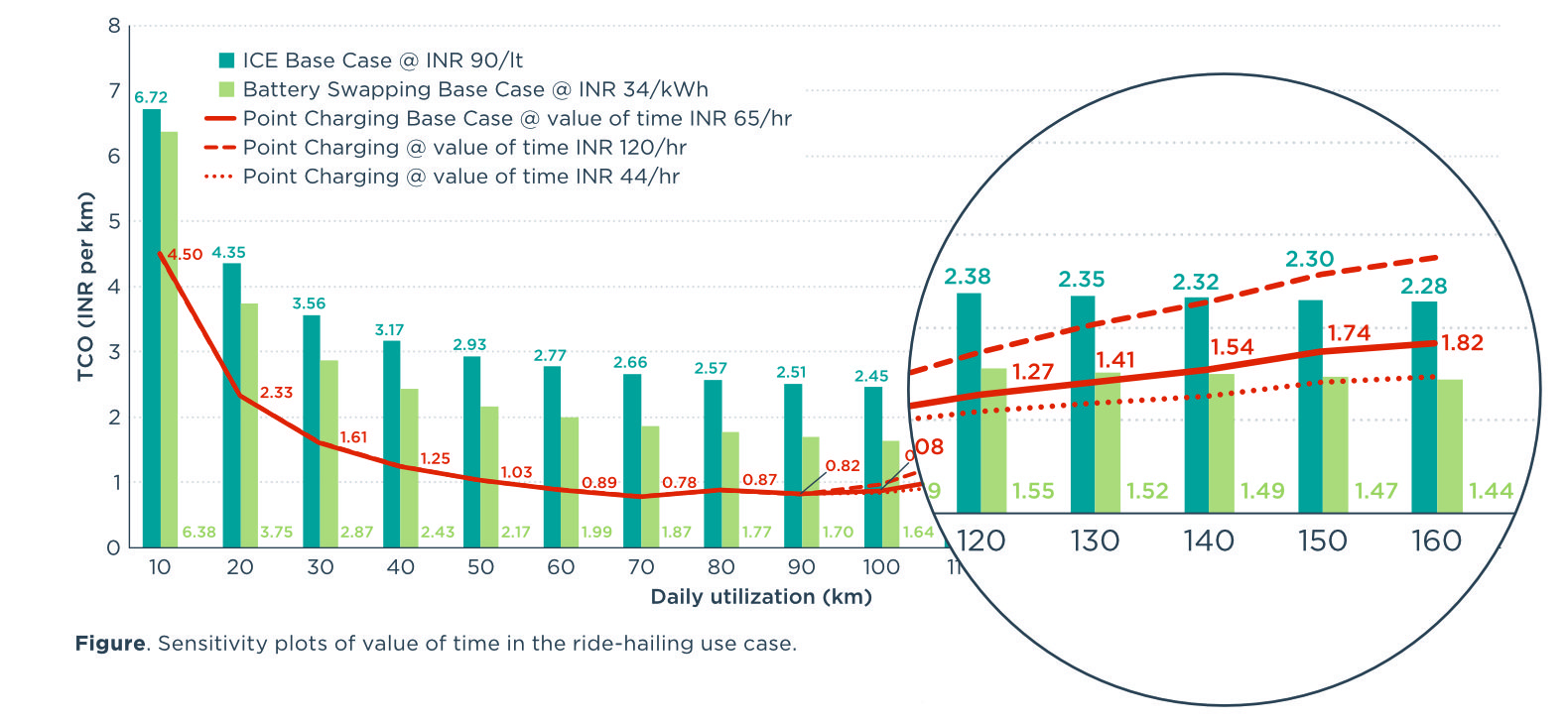Cost comparison of battery swapping, point charging, and ICE two-wheelers in India
Report
Battery swapping for electric two-wheelers in India: Strategy hinterlands
Created with support from NITI Aayog, this work explores the emerging landscape of battery swapping for electric two-wheelers (E2Ws) in India. There are clear benefits to battery swapping, a plug-and-play solution for charging the battery of an electric vehicle, and it takes just a few minutes to charge an E2W. Because battery-swappable E2Ws are sold without a pre-fitted battery, their upfront cost is significantly lower than those that include a battery, and this can be an important consumer benefit in a price-sensitive market like India.
We conducted quantitative analysis of the impact of various parameters on vehicle total cost of ownership (TCO). Results show that TCO per kilometer (km) for both conventional two-wheelers and E2Ws is lowest when they are used for commercial operations with higher daily utilization rates such as e-commerce deliveries and shared mobility. For E2Ws this is largely because of the avoided opportunity cost of charging, and the figure below illustrates this for the ride-hailing use case.

This research helps create an agenda for future strategy that supports the battery-swapping business model in India. Because lower battery prices in the future would diminish the cost benefits of acquiring an E2W without the battery, early policy could focus on things less likely to change in the near and medium term, such as the value of time saved on charging and on supporting battery swapping operators (BSOs) in maintaining best practices for operational safety and end-of-life care. That means things like extending future FAME subsidies to two-wheelers sold without pre-fitted batteries and relevant operational and safety standards for BSOs.